February 20, 2025 | 14:44 GMT +7
February 20, 2025 | 14:44 GMT +7
Hotline: 0913.378.918
February 20, 2025 | 14:44 GMT +7
Hotline: 0913.378.918
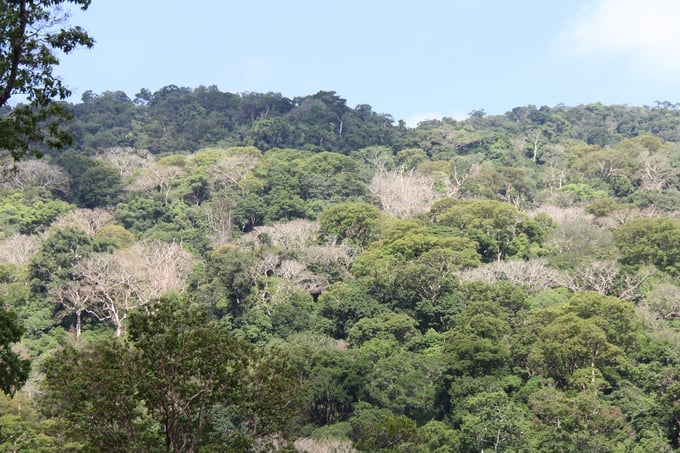
This forest canopy is home to several hundred Burmese padauk trees, some of which are several hundred years old. Photo: Dang Lam.
A 2019 survey conducted by the Gia Lai province's inter-sectoral working group found that the forest area under the management of Krong Pa Forestry Company Limited, located within the administrative boundaries of Krong commune, Kbang district, houses approximately 410 Burmese padauk trees (group I). These trees are distributed across twenty-seven plots in seven sub-areas. The ancient forest, containing trees that date back several centuries, is considered a treasure among the majestic Central Highlands.
Ho Ngoc Tho, Director of Krong Pa Forestry Company reported, "All of the Burmese padauk trees in the forest area grow naturally. The 2019 survey conducted by the Gia Lai province's inter-sectoral working group revealed that the trees have diameters ranging from 35 centimeters to over 1.4 meters, with many trees determined to be several hundred years old."
Burmese padauk trees are scattered across the mountain ranges in seven sub-areas: 82, 83, 87, 89, 90, 93, and 94. The highest concentration of these trees is located in Vir village, with approximately 250 trees; and H’ro village, with approximately 40 trees. The existence of this largest Burmese padauk population in Gia Lai province holds significant importance for genetic conservation and the preservation of a rich and diverse forest ecosystem.
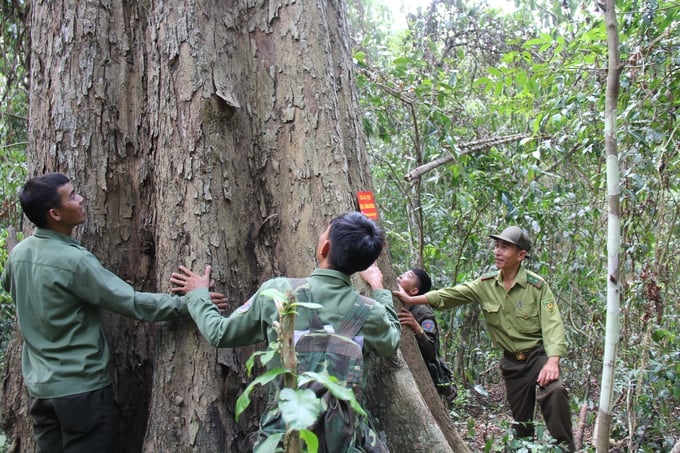
The Burma padauk tree trunks are too large for a single person to wrap their arms around. Photo: Dang Lam.
We had the opportunity to accompany forest protection officers in visiting the centuries-old Burma padauk forest deep within Krong commune. Nguyen Van Chim, Head of the Forest Management and Protection Team at Krong Pa Forestry Company, explained that Burma padauk trees typically grow along mountain slopes. During this season, the majority of forest trees are lush and green; however, the Burma padauk trees shed all their leaves, leading people who are unfamiliar with the species to think that the trees are dead. Consequently, Burma padauk trees are bare and leafless during this time of the year.
The To Nang Forest Management and Protection Station is located approximately 2 kilometers through the forsest from Vir village. The station oversees 1,512 hectares of natural forest area, which encompasses approximately 256 Burma padauk trees. Due to the high density of these trees, the company has assigned four forest protection officers to collaborate with ten local residents in a contract group, whose members take turns patrolling and protecting the forest.
"Burma padauk is categorized under group I. Notably, the Kbang padauk trees feature a massive diameter, a mild fragrance, and beautiful grain. In terms of market value, a single Burma padauk tree can be worth several billion Vietnamese dong. As a result, the Kbang padauk forest is unique in both Gia Lai province and the country as a whole, with a market value nearing a trillion Vietnamese dong," remarked Team Leader Chim.
Team Leader Chim has over 15 years of experience with the rare Burma padauk forest; he is also familiar with the intricate tricks and recklessness of illegal loggers. Due to the trees' multi-billion value, these individuals constantly seek opportunities to cut them down. They employ various devious methods, including poisoning the trees and subsequently using modern saws to carve and chop the branches.

Forest protection officers constantly surveil the Burma padauk forest throughout the day. Photo: Dang Lam.
Duong Tuan Anh, Head of the To Nang Forest Management and Protection Station, stated, "Burma padauk is a high-demand commodity on the market, which makes it a target for illegal loggers who cut down the trees whenever they get the chance. Before 2021, the trees were continuously felled, and some were gradually poisoned to death. In response to this issue, the company coordinated with the police and relevant local authorities to identify the perpetrators. As a result, the illegal logging in these forests has significantly dropped."
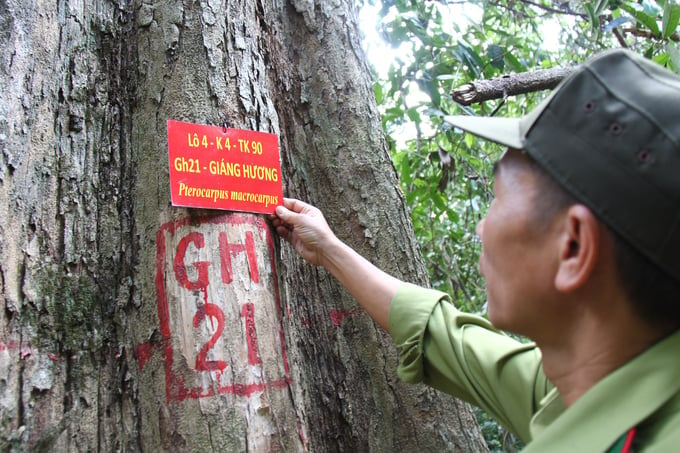
Burma padauk trees are tagged with identification numbers to faciliate protection efforts. Photo: Tuan Anh.
According to Tuan Anh, forest protection officers have set up temporary shelters within the forest, often in areas without cell phone coverage, in order to preserve the forest's tranquility. Their meals primarily consist of dried fish, fish caught from streams, forest vegetables, and stored instant noodles. The officers take turns visiting their homes and carrying food back to the forest.
The preservation of the century-old Burma padauk forests in Kbang district owes much to the dedication of the forest protection forces. Despite numerous difficulties, dangers, and sleepless nights, they remain committed to guarding the ancient forest for future generations.
Truong Thanh Ha, Deputy Director of the Gia Lai province's Department of Forest Protection, stated that the Kbang District Party Committee has assigned communications teams to villages with a high level of illegal logging and timber transportation activities. They aim to educate and mobilize the community to join in the local forest protection efforts.
Translated by Nguyen Hai Long
/2025/02/17/3351-5-222605_962.jpg)
(VAN) Many farmers eagerly went to the field to witness the harvest of purple rice researched by Vietnamese scientists and giving high productivity right from the first crop.
/2025/02/17/1723-2-081201_909.jpg)
(VAN) Phuc Sinh continuously receives funding from the Dutch &Green Fund and the Dutch Fund for Climate and Development, becoming an inspiring story about sustainable development.
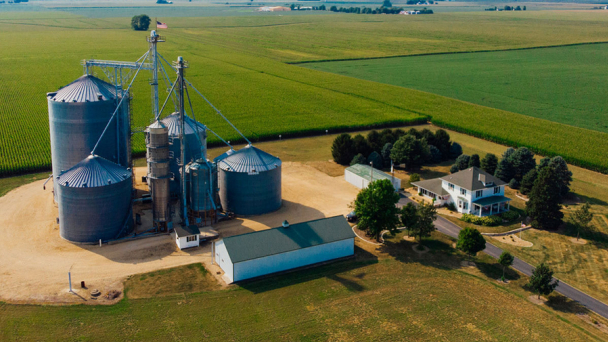
(VAN) The nitrogen product developed by the company, which was co-founded by Professor Chris Voigt, is being used across millions of acres of American farmland.
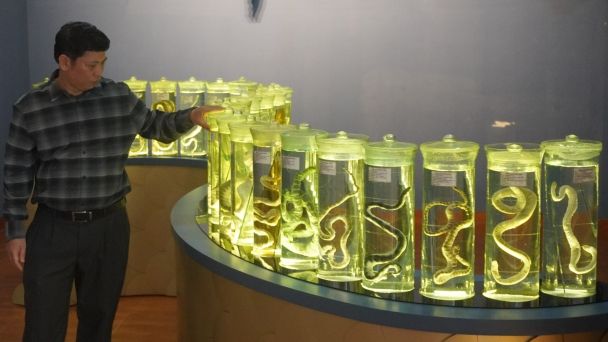
(VAN) The Institute of Oceanography in Nha Trang City (Khanh Hoa province) is responsible for the preservation, conservation, and exhibition of 26 uncommon indigious sea snake species of Vietnam.
/2025/02/11/5958-0-124126_949.jpg)
(VAN) Thanks to thorough straw collection, Tra Vinh province led the Mekong Delta in the reduction of greenhouse gas emissions when piloting the 1 million ha of high-quality rice project.
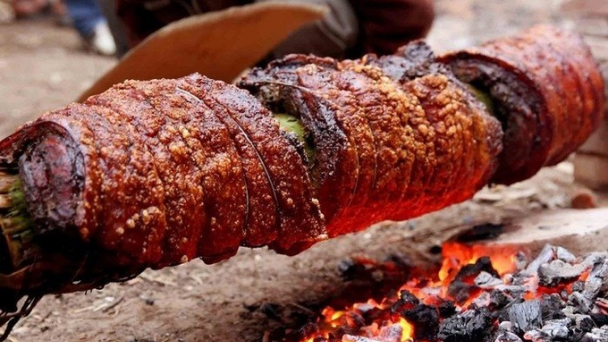
(VAN) The roasted pork dish is prepared according to food safety standards, thereby contributing to the preservation of the culinary heritage of the ancient Dong Lam village.
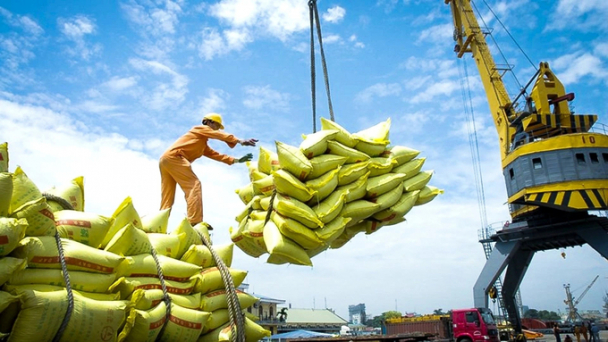
(VAN) Vietnam-Philippines trade turnover exceeded the 6 billion USD mark for the first time in 2024, with rice making a significant contribution of over 2.6 billion USD.